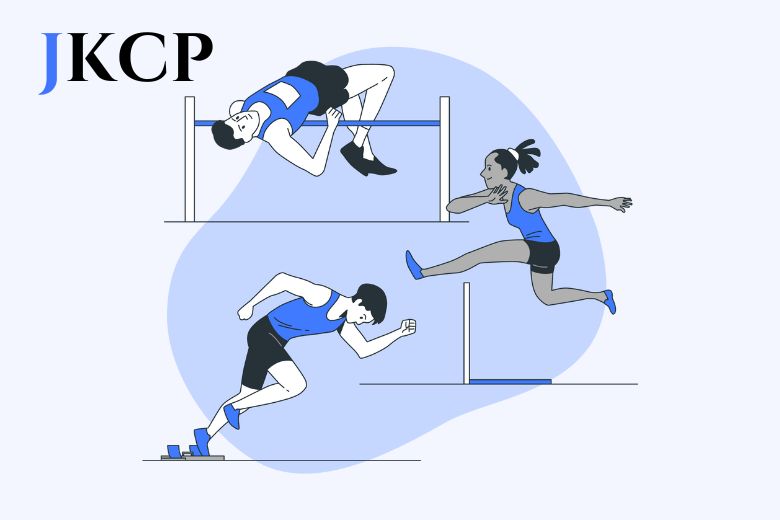The Real Deal on MLB Salaries: How Much Does a Baseball Player Make?
Baseball has long been a cornerstone of American sports, and it’s no secret that the top players are pulling in some astronomical salaries. How much do baseball players actually make? Is everyone on the field banking millions? Not quite. The answer varies significantly depending on several factors, including the league they play in, their experience level, and even their position on the team. Let’s dive into the reality of MLB player salaries—from the superstars cashing in record-breaking contracts to the lesser-known players grinding in the minor leagues.
Highlights
- The average Major League Baseball (MLB) player salary was $4.22 million in 2023, a record high.
- The median salary, a more accurate measure for most players, was approximately $1.5 million.
- Starting pitchers earn significantly more, with an average salary of $5.2 million and a median of $2.8 million.
- Designated hitters have some of the highest salaries, averaging $13.4 million.
- Around 38 MLB players make over $20 million annually.
- Top athletes, such as Aaron Judge and Mike Trout, pull in over $30 million a year.
- The path to MLB is tough, with less than 1% of NCAA players making it to the majors.
- The average playing career in the MLB is around 5.5 years, leading to large early-career earnings for top players.
Major League Baseball Salaries
The Big Picture: Average vs. Median Salaries
When you hear that the average MLB salary hit $4.22 million in 2023, it sounds like every player is swimming in cash. But averages can be deceiving. A handful of players earning over $30 million per year skew the numbers dramatically. To get a clearer picture, look at the median salary, which is around $1.5 million. This represents the midpoint of player earnings and gives a better sense of what most players are actually making.
The gap between the average and median salary highlights the disparity between the top earners and the rest of the league. While stars like Max Scherzer and Aaron Judge pull in astronomical figures, many players earn far less, and some barely scrape by in the minors. This dynamic is crucial to understanding the broader financial structure of MLB.
Top Earners: Who’s Making the Most?

At the very top of the salary pyramid are the superstars, the players who not only define the game but also bring in massive revenues through their performance, fan base, and marketability. Max Scherzer and Justin Verlander sit at the pinnacle, each earning $43.33 million annually. These contracts, often negotiated over multiple years, are filled with bonuses and performance incentives that can push earnings even higher.
Let’s not forget Aaron Judge, who secured $40 million a year after his historic season with the New York Yankees in 2022. Judge, who smashed 62 home runs, capitalized on his star power, making him one of the highest-paid athletes in any sport. Meanwhile, Mike Trout, arguably one of the best players of his generation, earns $37.12 million per year with the Los Angeles Angels. His $426 million contract over 12 years is one of the largest ever signed.
In addition to their substantial salaries, top MLB players significantly influence the sports betting landscape. Bookmakers capitalize on the popularity of superstars like Aaron Judge and Mike Trout by offering numerous betting options related to their performances, including game picks and player prop bets. Fans eager to support their favorite players often engage in placing bets, which contributes to the bookmakers’ profits.
But while the top stars are cashing in, they are far from the norm. Here’s a snapshot of the top 10 highest paid players in 2023:
| Player | Team | Salary ($) |
|---|---|---|
| Max Scherzer | New York Mets | 43.33M |
| Justin Verlander | New York Mets | 43.33M |
| Aaron Judge | New York Yankees | 40M |
| Mike Trout | Los Angeles Angels | 37.12M |
| Carlos Correa | Minnesota Twins | 36M |
| Stephen Strasburg | Washington Nationals | 35M |
| Francisco Lindor | New York Mets | 34.1M |
| Anthony Rendon | Los Angeles Angels | 35M |
| Gerrit Cole | New York Yankees | 36M |
| Corey Seager | Texas Rangers | 33M |
Minimum Salaries
The minimum salary for an MLB player is also noteworthy. As of 2024, the minimum salary for a major league player was set at $720,000 per year. This minimum ensures that even the lowest-paid players in the majors earn a comfortable living.
Positional Paychecks: Who Earns the Most?

In baseball, certain positions command higher salaries than others. Pitchers, especially elite starters, are often at the top of the pay scale, reflecting their critical role in a team’s success. The average salary for a starting pitcher is $5.2 million, but top pitchers like Scherzer and Gerrit Cole earn much more. In fact, Scherzer’s contract broke new ground by giving him over $40 million a year, setting a precedent for future pitcher contracts.
Designated hitters (DH), a position primarily used in the American League, also earn substantial salaries. These players are often seasoned veterans with impressive batting stats, and their average pay is around $13.4 million annually.
On the flip side, some positions are not as highly compensated. Shortstops, despite their critical defensive role, earn significantly less, with an average salary of $2.6 million. Outfielders, depending on their defensive and offensive capabilities, can earn anywhere between $3 million and $10 million, with right fielders generally earning more than center fielders.
Contract Structures and Incentives
MLB contracts often include various incentives and bonuses. Players might receive performance bonuses for achieving specific milestones, such as a certain number of home runs or stolen bases. Additionally, contracts can include signing bonuses, which are paid upfront when a player signs a new deal. These bonuses can significantly increase a player’s overall earnings.
Minor League Baseball Salaries
While MLB salaries can reach stratospheric levels, the reality for minor league players is starkly different. Most minor league players earn a few thousand dollars per month, with some making as little as $1,000 during the season. The road to the majors is tough, and less than 1% of players drafted from college baseball make it to the big leagues. Many players toil in the minors for years without a call-up, and even those who do make it often face years of relatively low pay.
Earnings by League Level
According to Baseball America, here are the average salaries for the 2024 season:
- Triple-A: $35,800 per year
- Double-A: $30,250 per year
- Single-A: $20,000 per year.
These figures highlight the financial struggles many minor leaguers face, as their earnings are significantly lower than their major league counterparts.
Challenges for Minor Leaguers
Minor league players often have to endure challenging conditions, including long bus rides, subpar accommodations, and limited meal allowances. These factors can make the financial strain even more challenging for those trying to make it to the majors.
Many minor league players rely on off-season jobs or help from their families to make ends meet. This stark contrast highlights the reality that for every multimillionaire in MLB, there are hundreds of players toiling away in the minors for a fraction of the pay.
Recent Changes and Advocacy
There has been a growing movement to improve the conditions and pay for minor league players. Advocacy groups and player unions have been pushing for better salaries and working conditions. Recent changes have included increases in pay and better housing arrangements, but there is still a long way to go to ensure fair compensation for all minor league players.
Factors Influencing Baseball Salaries
Performance and Marketability
A player’s performance on the field is the most significant factor influencing their salary. Players who consistently perform well and contribute to their team’s success are more likely to command higher salaries. Additionally, marketability plays a crucial role. Players with a strong fan following, charisma, and endorsement deals can earn significantly more through off-field opportunities.
Experience and Service Time
Experience and service time also play vital roles in determining a player’s salary. In MLB, players with more years of service tend to earn higher salaries due to the arbitration process and free agency eligibility. For example, players with three to six years of service time can negotiate higher salaries through arbitration, while those with over six years become free agents, often leading to lucrative contracts.
Team Budget and Market Size
The financial capacity of the team and the market size also influence player salaries. Teams in larger markets, such as New York or Los Angeles, typically have higher revenue streams and can afford to pay their players more generously. Conversely, smaller market teams often operate with tighter budgets, impacting their ability to offer competitive salaries.
Financial Realities and Player Lifestyle
Cost of Living and Lifestyle Choices
While major league players enjoy substantial earnings, the cost of living and lifestyle choices can significantly impact their financial well-being. Players in cities with high living costs may find their earnings stretched thinner than those in more affordable locations. Additionally, extravagant lifestyle choices, such as luxury homes and cars, can quickly deplete even the most substantial salaries.
Financial Planning and Post-Career Considerations
Given the relatively short careers of professional athletes, financial planning is crucial. Many players work with financial advisors to ensure their earnings last beyond their playing days. Post-career opportunities, such as coaching, broadcasting, or business ventures, also play a role in a player’s long-term financial health.
Endorsements and Sponsorships
For top players, their base salary isn’t the only source of income. Endorsements from brands like Nike, Adidas, and Under Armour can bring in millions on top of their contracts. Superstars like Mike Trout and Aaron Judge supplement their baseball income with massive deals from global brands.
Future of MLB Salaries
Looking ahead, it’s clear that MLB salaries are only going to increase. With free agents like Shohei Ohtani expected to sign record-breaking deals, the upper limits of player earnings are set to rise even further. Ohtani’s unique ability to both pitch and hit at an elite level could land him a contract worth over $500 million.
As the league grows, the pressure on teams to compete financially will continue to drive up salaries. Smaller market teams, however, will need to be strategic in managing their payrolls to stay competitive with big-market giants like the Yankees and Dodgers.
Conclusion: Beyond the Big Contracts
While the top MLB stars are earning staggering amounts, it’s essential to recognize the wide disparity within the league. Many players fall far short of the eye-popping figures that dominate the headlines, particularly those in the minor leagues. For every Max Scherzer or Aaron Judge, there’s a player grinding away for a fraction of the pay, hoping to one day make it to the big leagues.
Despite this, MLB remains one of the most lucrative sports leagues globally, and with every new contract, the bar is raised higher for future stars. Whether you’re a rising minor leaguer or a seasoned pro, the world of baseball salaries is as unpredictable as the game itself.



